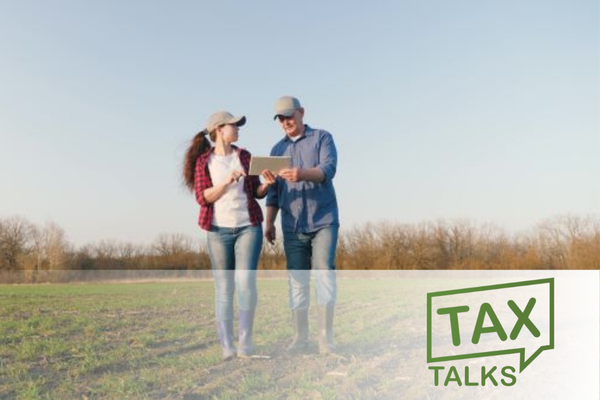May 29, 2024

With many taxpayers having filed their 2023 taxes, refunds are appearing in their bank accounts. Particularly for those in states, that had an expansion of refundable credits generated from farm businesses, there may be a question of what to do with these funds.
As a baseline, all taxpayers should keep in mind that refunds generated from refundable tax credits, attributable to their business activity, at the state level, will be includable in their Federal taxable income for the year they were received based on the Maines v. Commissioner Tax Court decision. Agricultural producers who received a state tax refund from these credits on their 2023 returns should work with a qualified tax accountant to ensure that the refunds are appropriately included in 2024 Federal income and analyze what state level subtraction modifications may be applicable. There may be planning opportunities available during 2024 to mitigate the impact of this additional taxable income.
Ex. Farmer Joe’s NYS tax return for 2023 showed the following computation:
|
Tax before Credits |
$4,500 |
|
Non-Refundable Credits |
-$4,500 |
|
Refundable Credits: Investment Tax Credit, Farmer’s School Tax Credit, Manufacturer’s Real Property Tax Credit |
-$200,000 |
|
NYS Withholding from Off-farm Job |
-$1,350 |
|
NYS Estimated Payments |
-$2,000 |
|
Total Refund |
$203,350 |
In 2024, Farmer Joe would include $200,000 of his refund (the portion from refundable business credits) in his Federal gross income.
For a sole proprietor, the decision to reinvest these refunds into the farm or keep them for personal use may be relatively straightforward as structurally the farm business and the individual are one in the same.
In the case of an LLC or partnership, there may be more dynamics to consider. Some farm businesses may operate as a corporation in which the business entity is a taxpayer, but the majority are a form of flow-through entity. Because flow-through entities (LLC taxed as partnership, general partnership, S-Corporation) don’t pay tax themselves, all items of income, loss, credits, etc. are flowed through to the partners. Thus, the business entity undertook the activity or investment that generated the tax credit, but the individual partners are the ones that receive the economic benefit of the credit.
Taxpayers finding themselves asking the question of “what are we going to do with our refunds?” among their business partners should consider first that they individually bear the burden of the federal income tax from the inclusion of these credits in the following year. If the partners decide to reinvest the credits into the business, this will be viewed as an additional capital contribution. To the extent that additional capital contributions are made disproportionate to current capital ownership, the business will see capital ownership increase in favor of those who contribute more. This is not necessarily a good or bad outcome as agricultural producers should individually consider their desired balance between the right to liquidation proceeds of the business and off-farm investments or family living needs.
The financial services team at Farm Credit East can work with you to apply a refund strategy that best fits your specific situation and develop a plan that meets your goals. Contact us today to learn more.




